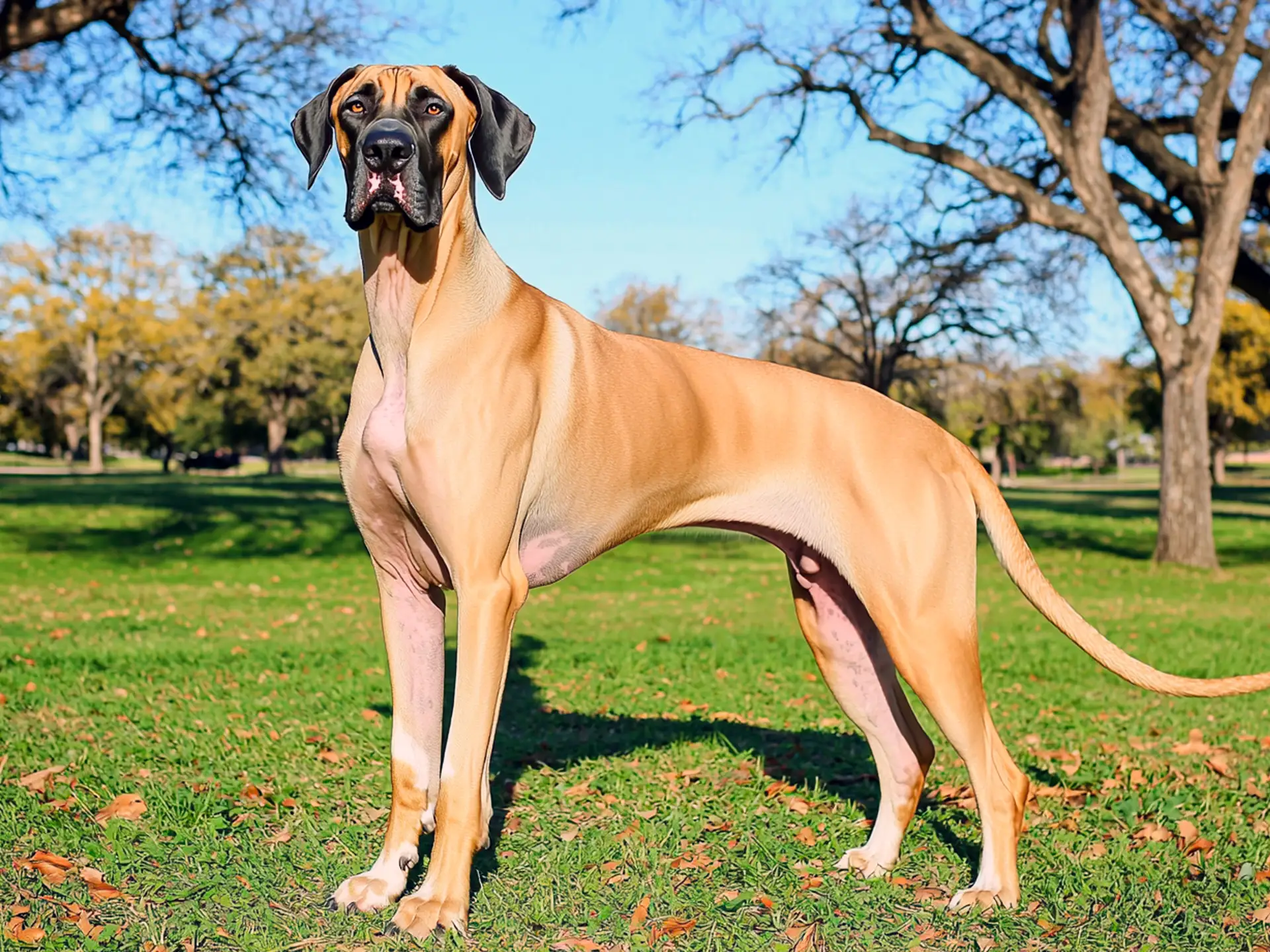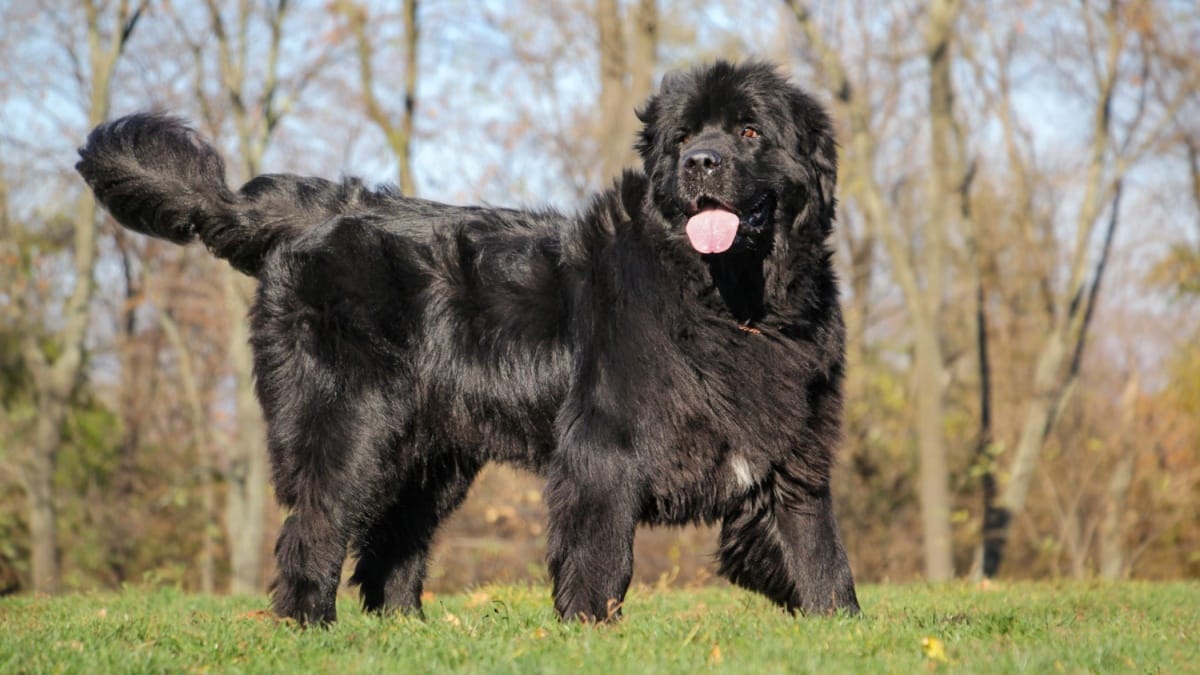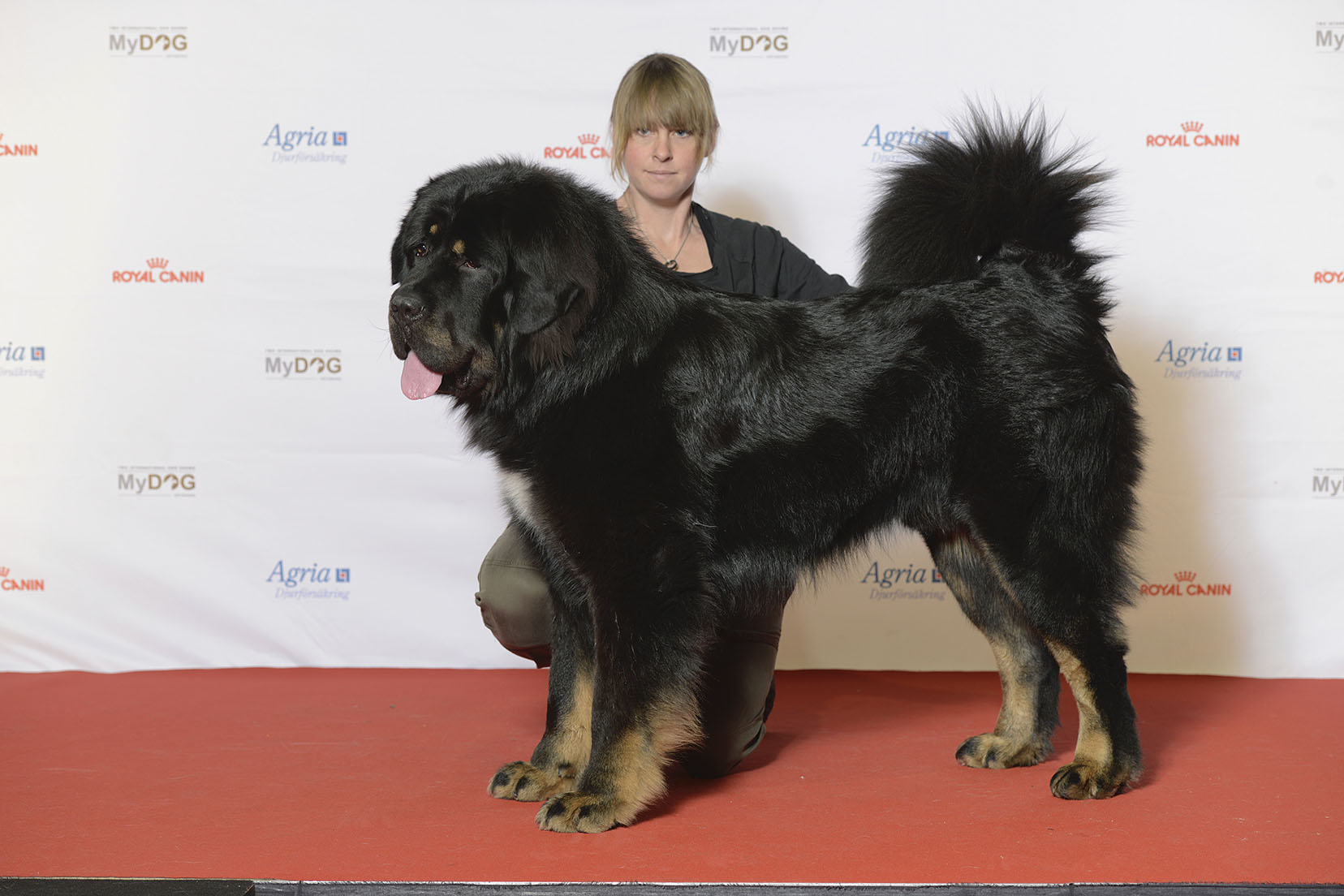Ever encountered a dog so large it could be mistaken for a small pony? Giant dog breeds like the Great Dane, Mastiff, and Saint Bernard not only capture attention with their sheer size but also inspire awe and curiosity. These colossal canines possess unique characteristics that distinguish them from smaller breeds, leading to specialized care and needs that every dog enthusiast should be aware of.
Historically, giant dog breeds have been bred for specific tasks such as guarding, hunting, and rescue operations, which demand both physical strength and a calm demeanor. According to recent statistics, these breeds often face increased health risks, including joint issues and heart problems. Thus, understanding their dietary, exercise, and medical requirements remains vital for ensuring their well-being and longevity.
Giant dog breeds, such as Great Danes and Mastiffs, require unique care due to their size. They need a balanced diet rich in nutrients to support joint and bone health, regular vet check-ups for early detection of heart issues and bloat, consistent training for manageable behavior, and spacious living environments.
Giant Dog Breeds: The Biggest Canines and Their Unique Needs

Giant dog breeds, like Great Danes and Mastiffs, are known for their impressive size and gentle nature. These dogs can weigh more than 100 pounds, making them powerful yet affectionate companions. While they are often protective, many giant breeds are surprisingly friendly and loving. Their large size means they need plenty of space to move around. Owners of these breeds should consider living arrangements carefully.
These large breeds have specific needs different from smaller dogs. For instance, their joints can suffer from the extra weight they carry. It’s crucial to provide them with the right diet to support strong bones and joints. Regular vet check-ups are vital to monitor their health. Keeping them active is also essential for their well-being.
Training giant dogs requires patience and consistency. Because of their size, it’s important to teach them commands early. This ensures they are well-behaved and safe around people, especially children. The process can take time, but these breeds are often eager to learn. Socialization is equally important, helping them interact well with other dogs.
Feeding a giant dog can be an adventure on its own, as they consume a lot of food. A balanced diet rich in proteins and nutrients supports their large physique. Considering their health challenges, specialized dog food is sometimes necessary. Owners should follow veterinarians’ recommendations for portion sizes. Investing in quality food helps maintain their strength and energy levels.
Overview of Popular Giant Dog Breeds
Giant dog breeds are impressive in both size and personality. The Great Dane is often the first breed people think of when considering large dogs. Known as the “gentle giant,” this breed is friendly and social. Another popular choice is the Mastiff, with its powerful build and sweet disposition. Many families appreciate these dogs for their loyalty and warmth.
Saint Bernards are well known for their gentle disposition and rescue skills. These dogs have historically been used to find and save travelers in the snowy Alps. Then there’s the Newfoundland, which is famous for its excellent swimming ability. Their webbed feet make them natural water lovers. Both breeds are cherished for their nurturing nature with children.

Interestingly, the Irish Wolfhound is among the tallest dog breeds. Despite its height, it’s known for being calm and dignified. Its history as a hunting dog gives it a noble reputation. Its size commands attention, yet its loyal affection wins hearts. Families often admire its noble presence alongside its gentle behavior.
Other notable large breeds include the Leonberger and the Tibetan Mastiff. These dogs are equally striking and beloved for their unique traits. A list of popular giant breeds might include:
- Great Dane
- Mastiff
- Saint Bernard
- Newfoundland
- Irish Wolfhound
- Leonberger
- Tibetan Mastiff
Characteristics That Define Giant Dog Breeds
Giant dog breeds have several distinctive traits that make them stand out. One of the most obvious is their enormous size, often weighing over 100 pounds. Despite their size, many are gentle and affectionate, earning them the nickname “gentle giants.” These dogs tend to have a deep, rumbling bark that matches their powerful stature. Their presence can be both commanding and comforting.
Besides their size, these breeds often possess a calm temperament, making them excellent companions. They don’t usually require as much exercise as smaller, more energetic dogs. However, their sheer weight means they need sturdy flooring and durable beds. Their friendly and loyal nature is a hallmark of these breeds. This makes them great for families and children.

The health needs of giant breeds are different than smaller dogs. Joint issues can arise due to their size, so regular vet check-ups are crucial. Proper nutrition plays a significant role in their overall health. They need a balanced diet that supports their massive frames. Owners often find that specialized dog food helps keep them healthy.
The living environment for giant dogs should cater to their size and comfort. Spacious areas both inside and outside are ideal. Important items for maintaining their well-being include:
- Large, durable beds
- Sturdy flooring
- Spacious living areas
- Nutrient-rich food
Health Considerations Specific to Giant Dogs
Giant dog breeds face unique health challenges due to their size. One major concern is joint health, including conditions like hip dysplasia. Larger dogs carry more weight, putting stress on their bones and joints. Regular vet visits are crucial to monitor and manage these issues. Providing supplements can help maintain joint health.
Heart conditions are also more common in giant breeds. Diseases like dilated cardiomyopathy (DCM) can lead to serious complications. Symptoms might include lethargy, difficulty breathing, and a persistent cough. Early diagnosis and treatment are essential for managing these conditions. Regular heart health check-ups are recommended.
Bloat, or gastric torsion, is a life-threatening condition where the stomach twists uncomfortably. This condition requires immediate veterinary attention. To reduce the risk, it’s advisable to feed giant dogs smaller, more frequent meals. Ensuring they do not engage in vigorous activity right after eating also helps. Elevating food bowls can sometimes prevent this issue.
Nutritional needs for giant breeds are also unique. They require a balanced diet tailored to their size and energy needs. High-quality proteins and a balance of vitamins and minerals are essential. Overfeeding can lead to obesity, which further strains their joints. Consulting with a vet for a proper diet plan is always beneficial.
Regular exercise is important but should be tailored to their capabilities. Excessive running or jumping can harm their joints. Gentle walks and swimming are excellent options. Owners should also consider:
- Soft bedding to cushion their joints
- Regular grooming to spot skin issues
- Maintaining a healthy weight
- Veterinary check-ups every six months
Best Practices for Training and Socializing Large Dogs
Training large dogs begins with establishing a routine. Consistency is key, as big dogs need to understand the house rules. Using clear, simple commands helps them learn quickly. Positive reinforcement, like treats and praise, encourages good behavior. They often respond well to reward-based training.
Socialization is a vital part of raising a well-adjusted large dog. Introducing them to different environments, people, and other animals early can prevent future behavior issues. Socializing should start in puppyhood and continue throughout their life. Regular playdates can help them develop important social skills. This reduces fear and anxiety in new situations.

Another valuable tip is to enroll them in obedience classes. Professional trainers can offer insights and guidance tailored to specific breeds. Group classes also provide an opportunity for dogs to socialize. Learning alongside other dogs can be beneficial. Owners can reinforce the training techniques at home.
Maintaining a calm demeanor during training sessions is crucial. Large dogs often sense their owner’s emotions and can become anxious. Training sessions should be short to keep their attention focused. A quiet environment helps them concentrate better. Items to support training might include:
- Durable leash and collar
- Favorite chew toys for downtime
- Healthy training treats
- Clicker for consistent cues
Nutritional Needs and Diet Recommendations for Larger Canine Breeds
Larger canine breeds need a diet that supports their massive size and energy levels. High-quality proteins are essential for muscle maintenance and growth. Foods rich in vitamins and minerals can help support their overall health. It’s crucial to provide a balanced diet to prevent deficiencies. Supplements like glucosamine can also aid joint health.
Feeding schedules play an important role in the health of giant dogs. Unlike smaller breeds, larger dogs benefit from multiple smaller meals throughout the day. This helps reduce the risk of bloat, a serious condition in large dogs. Monitoring portion sizes can prevent overeating and obesity. Quality of food is just as important as quantity.
Specific breeds may have unique dietary needs. For instance, Great Danes and Mastiffs might require different nutrient proportions. Consulting with a veterinarian can help tailor the best diet for a specific breed. They can recommend specialized dog foods that cater to the dietary needs of giant breeds. This ensures the dog gets all necessary nutrients.
Considering the financial aspect of feeding large dogs is also important. They consume more food than smaller breeds, which can be costly. Investing in high-quality dog food is worth it for their health. Owners should be prepared for the increased food expenses. Here are some recommended food types:
- High-protein dog food
- Foods rich in Omega-3 for coat health
- Grain-free options for sensitive stomachs
- Specialized large-breed formulas
Monitoring their weight is essential to avoid health issues. Regular vet check-ups can help track their nutritional status. Adjustments may be necessary as they age or if their health changes. Ensuring they stay lean and healthy contributes to a longer, happier life. Nutritional care is a cornerstone of overall well-being for giant breeds.
Frequently Asked Questions
Giant dog breeds captivate many pet lovers due to their impressive size and gentle demeanor. Here are some common questions to understand these captivating canines better, ensuring their needs are met and they remain healthy and happy.
1. What are the most common health issues in giant dog breeds?
Giant dog breeds often face joint problems, such as hip dysplasia and arthritis. Their larger size places extra stress on their joints and bones, increasing the risk of these conditions. Consequently, regular veterinary checks and providing joint supplements can be beneficial. Proper exercise and maintaining an ideal weight also play a significant role in minimizing joint problems.
Heart issues are also prevalent, particularly dilated cardiomyopathy (DCM). These cardiac problems can lead to reduced exercise capability and fatigue. Monitoring their heart health with routine vet visits is crucial. Special diets or medications may be recommended to support their cardiovascular system.
2. How much exercise do giant dog breeds need daily?
Despite their large size, giant dog breeds typically need moderate exercise each day. They enjoy daily walks and playtime, which helps maintain their physical and mental health. However, excessive strenuous activity can strain their joints. It’s vital to balance exercise with enough rest to avoid unnecessary stress.
Engaging them in low-impact activities like swimming can be highly beneficial. Swimming is excellent for their muscles while being gentle on joints. Owners can consider interactive play sessions that stimulate their minds. Always monitor their energy levels to prevent overexertion and address any discomfort.
3. What dietary needs are specific to giant dogs?
Giant dogs require a diet high in protein and tailored to their size and energy levels. Large-breed dog food usually contains essential nutrients that support bone and joint health. It’s important not to overfeed, as excess weight can exacerbate joint stress. Portion control is crucial to avoid obesity.
Feeding them smaller, more frequent meals can help reduce the risk of bloat. Bloating is a serious digestive issue commonly affecting large breeds. Consulting with a vet to design the perfect diet plan is recommended. Supplements, like glucosamine, may also be incorporated for joint support.
4. Are giant dogs good family pets?
Giant dog breeds are often considered excellent family pets due to their gentle and affectionate nature. They are usually good with children and enjoy being part of family activities. Despite their size, these dogs often have a calm disposition, making them ideal companions in a family setting.
However, their size requires an environment that can accommodate them comfortably. Adequate space and sturdy furnishings are important to prevent accidental breakages. Families should also commit to their care needs, ensuring they receive enough exercise, training, and love.
5. What are the grooming needs of giant dog breeds?
The grooming requirements for giant dog breeds vary depending on their coat type. For breeds with long or thick fur, regular brushing is necessary to prevent tangles and matting. Bathing should be done when needed, but not excessively, as it can lead to skin issues.
Regular nail trims are essential to prevent discomfort or mobility issues. Cleaning their ears and teeth is also important for overall health. Professional grooming services might be beneficial for larger breeds to manage their size and specific grooming needs efficiently.
Conclusion
Giant dog breeds captivate with their majestic presence and endearing personalities. Their unique needs demand thoughtful care and understanding. By addressing their health, diet, and training requirements, owners ensure these loyal companions thrive. Investing time and resources fosters a happy and healthy relationship.
Caring for giant breeds is a rewarding commitment requiring dedication. Their gentle nature is a reminder of the bond humans share with animals. As guardians of these gentle giants, we learn lessons of patience and compassion. Embracing their needs enriches both their lives and ours.
